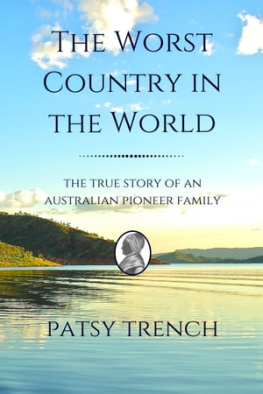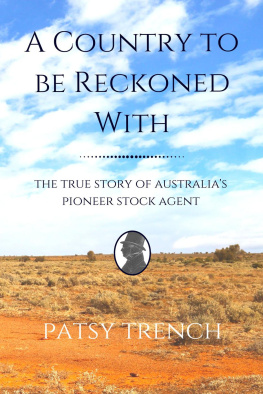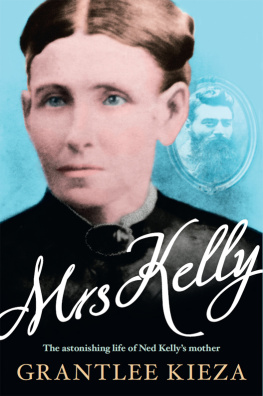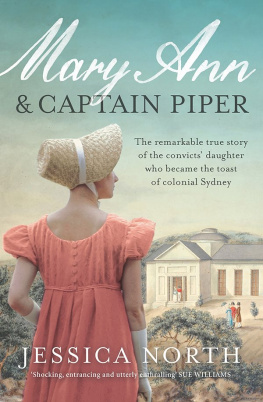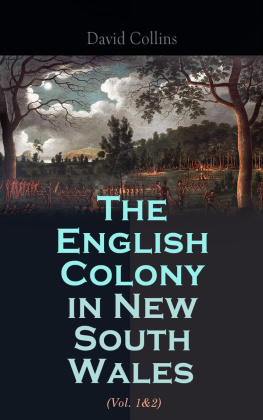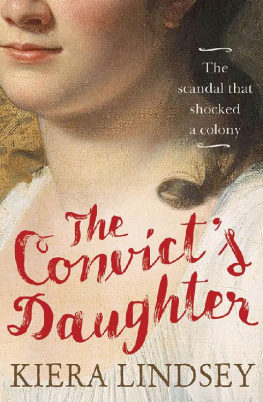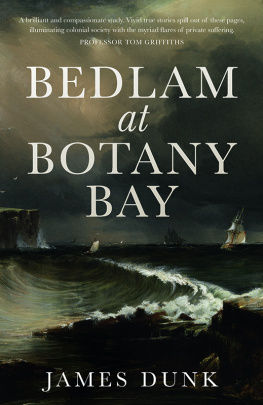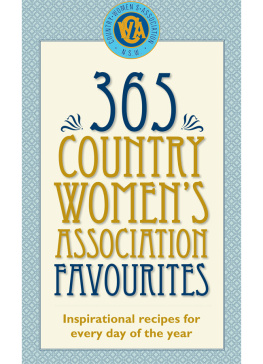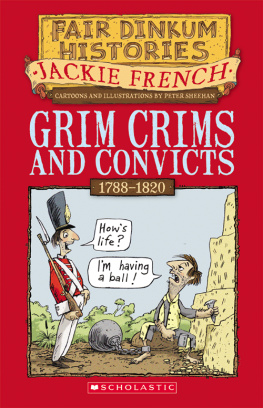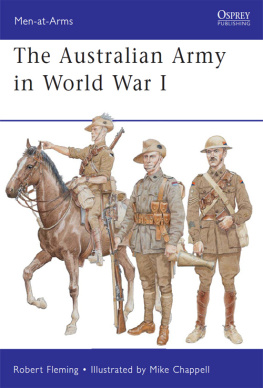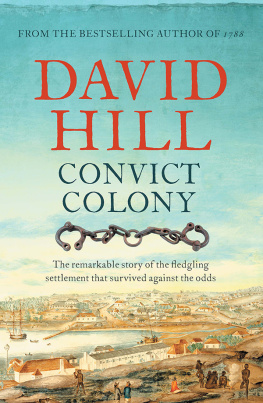THE WORST COUNTRY IN THE WORLD
The true story of an early Australian colonial family
Patsy Trench
Copyright 2012 Patsy Trench
Revised 2018
All rights reserved

Prefab Publications, London
I do not scruple to pronounce that in the whole world there is not a worse country than what we have yet seen of this
Major Robert Ross, Lieutenant Governor of New South Wales (second in command to the Governor), November 1788, ten months after the arrival of the First Fleet.
REVIEWS
Set against the backdrop of the Australian migrant experience, this is not only a great read but a thought-provoking one too, especially for those with links to Australia, which reinvented itself from a convict colony to one of the luckiest countries in the world.
Karen Clare, Family Tree magazine
This book... provides a rich scenario for Patsys imagination, building on meticulous research in archives, to present us with a sensitive novel about Australias beginnings interspersed with reflections relating to the present day.
Brian Schollar, Dorset Family History Society
Contents
Navigational notes for the e-reader
This book has an appendix, which lists my sources and provides further information the reader may find interesting. If you want to navigate from the text to the appendix, and back again, click on the chapter heading (ie Prologue) and it takes you to the appropriate place in the Appendix. To find your way back to where you were in the text click on the chapter heading (ie Prologue) in the Appendix. Hopefully there will be no signal failures or faulty trains.
~
Family trees
For further family trees, photos and maps please go to:
https://marymatchampitt.wordpress.com/family-trees/
1800: The loaf of bread
It is a bleak February day in the village of Fiddleford in Dorset. The clouds hang low and threatening and a light rain is beginning to fall.
Down a rutted lane strides a middle-aged woman. Her dress trails in the mud and her feet clad in unsuitable shoes splash through the puddles, yet on she goes, regardless. She looks like a woman with a mission and this could be a scene from a Jane Austen novel. Around the corner could be a Colonel Brandon or a Mr Darcy, waiting to ask for the hand of one of her daughters, to which she might reply Yes, oh yes! a little too eagerly perhaps.
At the end of the lane is Fiddleford Mill: a hive of people, noise and industry. The great wheel turns slowly, majestically. But the woman skirts the building and makes for the footbridge over the weir. A man, the miller himself perhaps, turns to greet her as she passes but she appears not to see him.
Halfway across the bridge she stops abruptly and turns to gaze into the weir. Looking over her shoulder into the swirling, bubbling water we can just make out can we? there among the circles and eddies and figures of eight, the image of a mans face, bobbing and twisting, fragmenting and then coming together. She reaches out a hand towards the image and it gazes blandly back at her, dancing, smiling, unreachable.
She makes to say something, then hesitates. How ridiculous to think the imaginary image of a dead man can help her now.
Mrs Pitt? This is for you.
A young girl has appeared beside her on the bridge, slightly out of breath, clutching something wrapped in cloth. The millers youngest daughter Maisie, Stacy...
Pa told me to bring it, says the girl, thrusting the bundle into the womans arms. He said you had need of it.
Its a loaf of bread, still warm. And the miller said she had need of it. He thinks she came here to beg.
I baked it myself, just an hour ago.
Thank you er Maisie, but...
Martha.
Martha. Thank you but I couldnt possibly...
She tries to give the bundle back. Its like a baby nobody wants. The young girl hangs back, stands there for a moment uncertainly and then turns and runs back the way she came.
Charity.
The woman makes to throw the bundle into the water, but hesitates. Its bread after all, freshly baked, and with prices as they are now...
She clutches the bundle to her for warmth and reassurance.
Introduction
Sydney, September 2009
We are half an hour away from our destination of Sydney Airport on what has been insofar as any twenty-four hour flight from London can be a relatively painless experience, when the pilot announces that due to local turbulence he is unable to land and we will be held in a holding pattern. The forecast isnt great, he tells us, so we may well be diverted to Melbourne, which is bad news for the jaded traveller. A while later he comes back on to say hes going to give it a go at landing and if it doesnt work, hell just turn the plane around and try again which, he assures us, is totally regular procedure.
I cant help noticing that in the intervening half hour the sky outside the windows, on both sides of the plane, has turned deep orange. Thats not the clear, sharp orange of a Sydney sunrise but something resembling tomato soup. Its impossible to see anything at all no buildings, no land, no water which means we are either flying into an inferno or this is the worst case of pollution in living memory. In the event the pilot lands the plane perfectly smoothly first go and gets a round of applause, just like you see in the movies.
What the pilot has chosen not to tell us is that the turbulence is a dust storm, the worst Sydney has experienced since World War II. By the time I leave the terminal the deep red has turned into an opaque off-white and the wind has got up, covering everything, my eyeballs included, in a thick coating of what presumably is topsoil from western New South Wales. It is an appropriate welcome to what my brother (who lives here) calls the land of extreme weather and a reminder of one of the many ways in which this country, to which I have been travelling frequently over the past few years from my home in England, is so Very Different.
Im here this time to attend a family reunion. Family reunions are big in Australia, and ours will be attended by 120 people, most of whom have never met before, and all of whom owe their existence to a woman called Mary Pitt.
Family history came late to me, and slowly. It began with my elderly aunt Barbara, the family genealogist, initially as a topic of polite conversation when I visited her in her retirement home in North Sydney. Barbara spent her retirement years researching our forebears, and I listened respectfully but with no particular interest to the story of her months spent poring over documents in libraries and history centres in Dorset and Sydney; and the story that emerged, of the woman who emigrated to Australia from Dorset, meant very little until I started to look into the history of colonial Australia itself and realised the significance of her arrival date: 1801.
The First Fleet arrived in New South Wales in 1788, which means that when Mary Pitt arrived the colony that later came to be known as Australia was barely thirteen years old. Whatever other motives the old country had for colonising the new, the original purpose of New South Wales was as a penal colony: to house the wrongdoers there was no room for back in England. What then prompted my great great great great grandmother, a widow aged 53, to uproot herself and her five children from village life in Dorset and travel across the world to live in a prison? There had to be a story there, and I had to tell it.
So I gave up my job, rented out my flat in London and over the course of the following four years I visited Australia as often as I could. I researched and read, travelled, looked and listened, and the more I discovered the more extraordinary was the story that unravelled.
Next page
